My car’s infotainment screen broke — and it highlights a big issue with modern cars
The infotainment screen does a lot more than display Google Maps
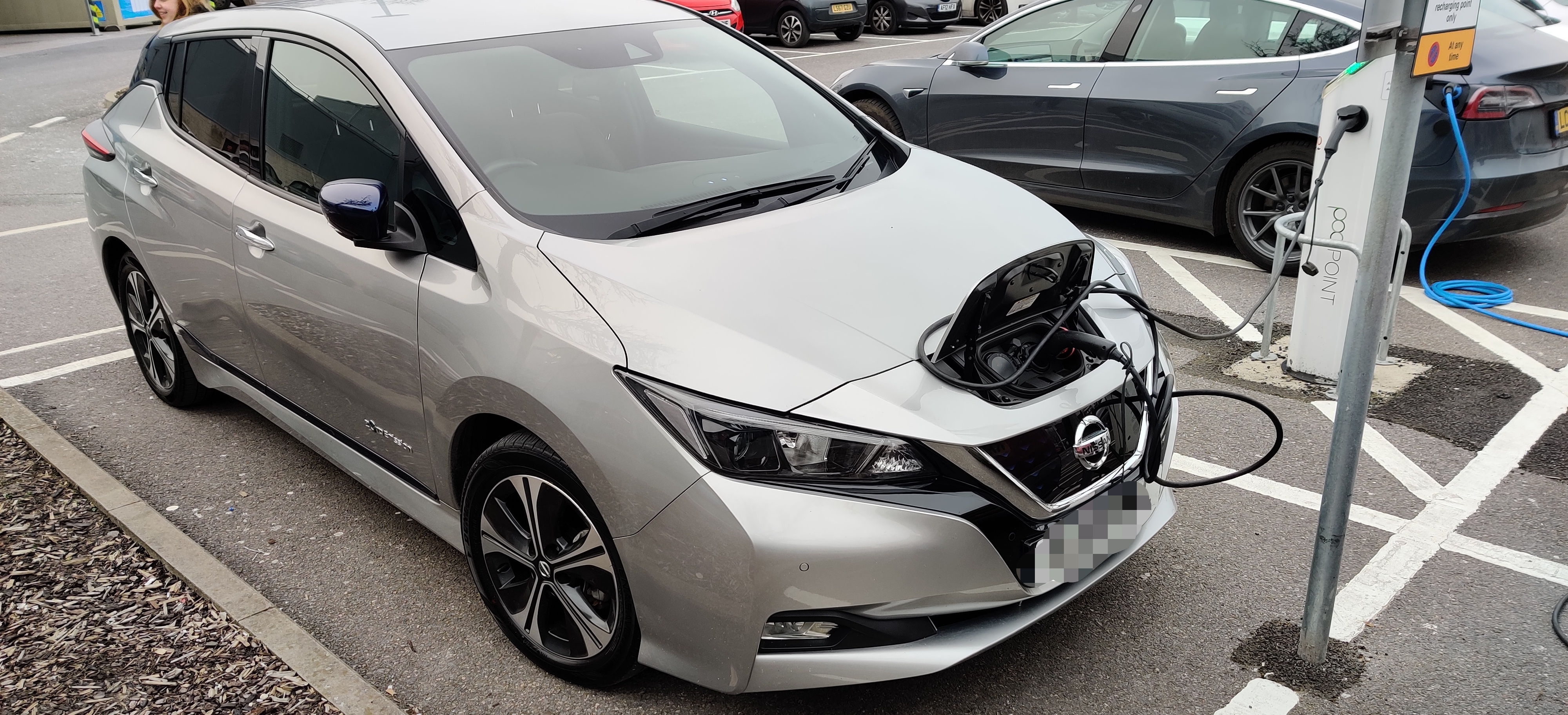
These days cars are not just four-wheeled machines that drive around. They’re complicated, hi-tech bits of equipment that might as well be a mobile computer packed with extra features — especially if we're talking about electric cars. Unfortunately, as cars get more advanced and feature-rich, the more problematic faults can be.
I discovered this recently when my Nissan Leaf’s infotainment screen died mid-drive. It was right at the end of a long trip, and the screen had been crashing a lot over the course of the weekend. Except this time the unit didn’t reboot as it had done before. It was dead, taking all the features it controlled with it.
Do you know how many features run through the Nissan Leaf’s central display? A lot, as it turns out, and I’ve been experiencing this first hand over the past month.
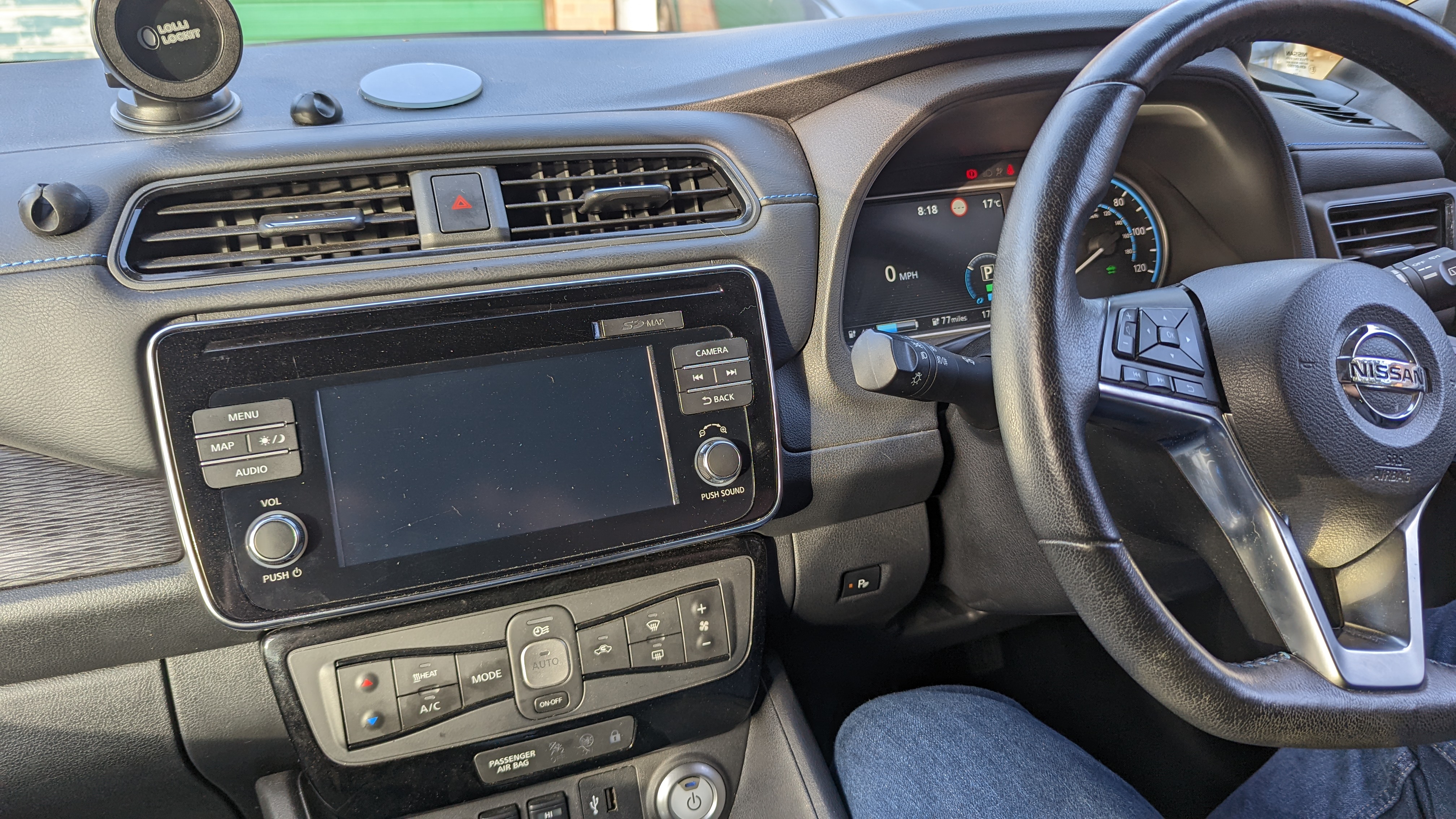
Granted nothing truly essential runs through the center display, and the digital gauge cluster is still working as normal. That means I can still see how fast I’m going, how much battery is left, and so on.
Had I been driving a Tesla Model 3 or Model Y, the loss of the center display would have been a full-blown catastrophe. That's because neither car has a driver information screen behind the wheel, instead pushing all that information into the center console.
While I had more sense than to buy a car with such a brain-dead setup, there is still quite a lot running through the Leaf’s infotainment system. Getting the problem fixed is a serious waiting game too. My local Nissan service center told me it was 6-8 weeks for a replacement unit, and that was assuming a replacement was actually available. That’s down to issues with the supply chain, and the fact there isn’t much demand for the unit itself.
Repairs can happen much faster, but not by much. 4-6 weeks, based on what I was told, in part because the unit needs to be shipped to a repair center on the other side of Europe. It also means having a gaping hole in the center console for the interim.
Get instant access to breaking news, the hottest reviews, great deals and helpful tips.
Infotainment systems do more than you realized
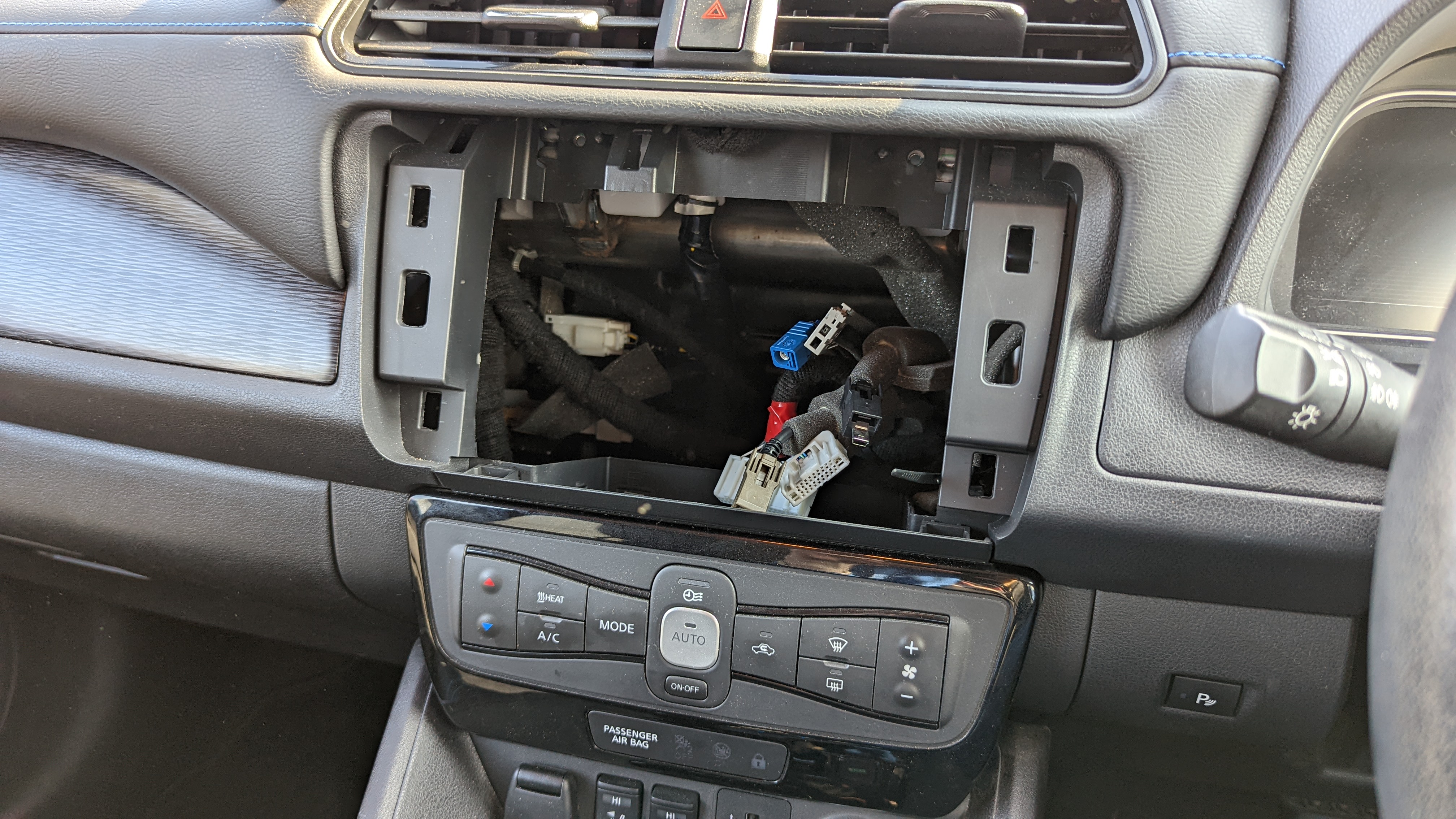
My car’s screen was sent off just under four weeks ago, and adjusting to the lack of a screen has been a challenge, to say the least. Partly because of the giant hole in the middle of my car, but also because of the features that needed the screen to operate.
Some of those features are pretty obvious. I can’t use my cameras or Android Auto, for example, because there’s no screen for those things to be seen. Likewise, while my car has physical buttons for things like climate control, fine-tuning the system now involves a heavy dose of guesswork.
While older cars with dials and switches had physical indicators of what your fans were doing, the Leaf does not. Instead, the status of the climate control system was visible on the screen. So defogging my windscreen, or trying to control the internal temperature is much more difficult than it should be.
Of course I’m glad that climate controls still work, which is more than I can say for the sound system. The infotainment screen is the car’s stereo, and without it there’s absolutely no audio. That means no Bluetooth and especially no hardwiring into the 3.5mm auxiliary port at the base. Not that the latter would do me any good, since my Pixel 6 Pro doesn’t have a headphone jack.
It’s also not compatible with the USB-C to 3.5mm adapter I found in a box of cables, probably because it’s not official Google merchandise. But no way would I have been willing to spend $12 on one, considering I haven’t used wired headphones for several years.
How I've coped without my infotainment system
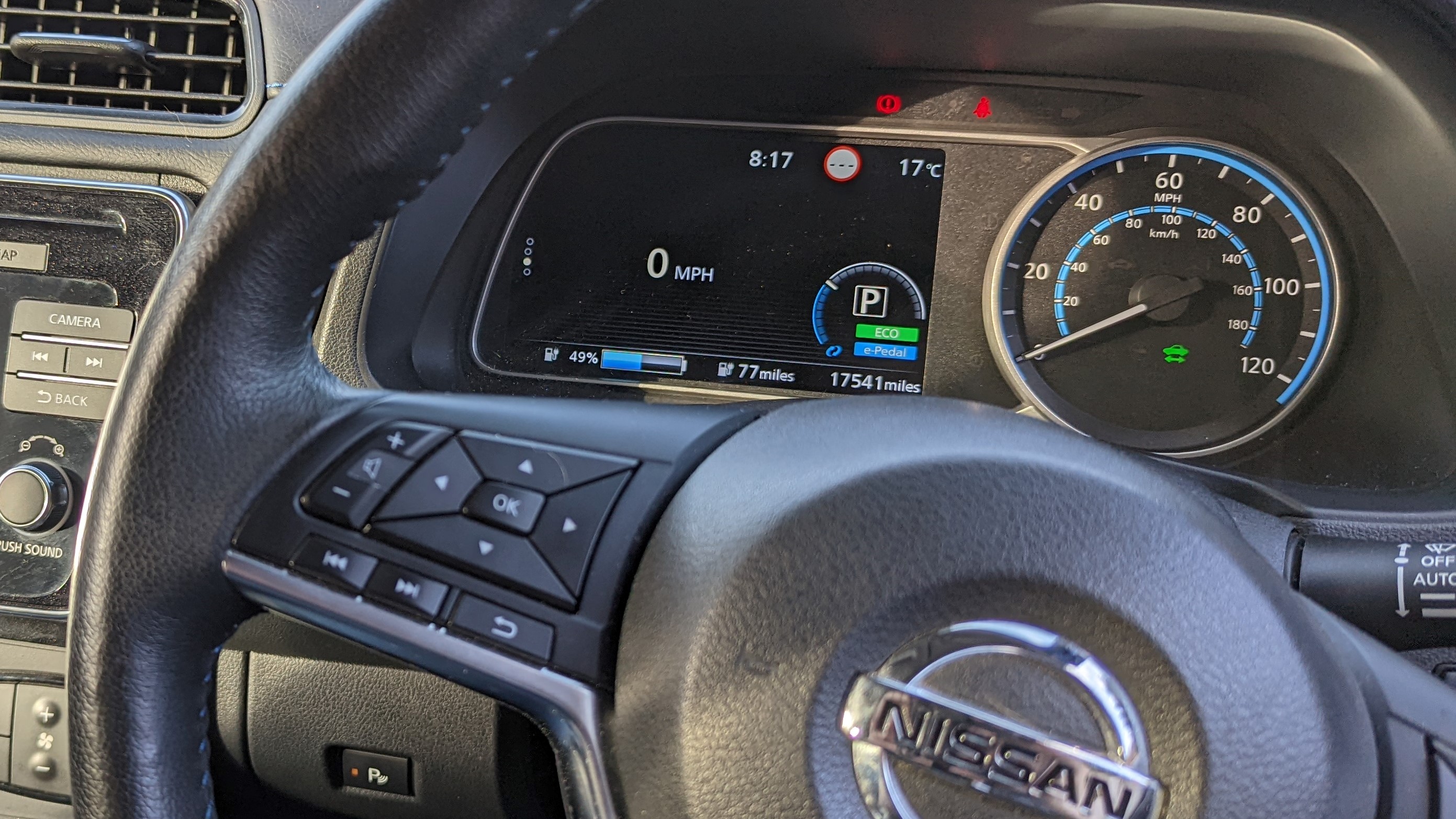
Fortunately it is possible to live without these features. They’re useful and very convenient, but it’s not like there aren’t alternatives readily available.
My phone’s 6.7-inch display isn’t quite as big as the 8-inch touchscreen my car used to have, but it’s good enough for displaying directions from Google Maps. Likewise the lack of in-car audio hasn’t been such an issue, because the Pixel 6 Pro’s built-in speakers have done a pretty solid job of filling in.
It’s not ideal, and the audio quality is nowhere near as good as the Leaf’s bog-standard sound system, but it does the job. Though, it may help that there’s no engine noise for it to contend with, only the relatively quiet whine of the electric motor. Had that not been the case, I may have had to source a Bluetooth speaker from somewhere.
Plus you don’t need an infotainment system to use Google Assistant while you’re driving. I do miss using the voice command button on my steering wheel. I’ll never be able to get used to how awkward it is to shout “Hey Google” to get my phone to do stuff.
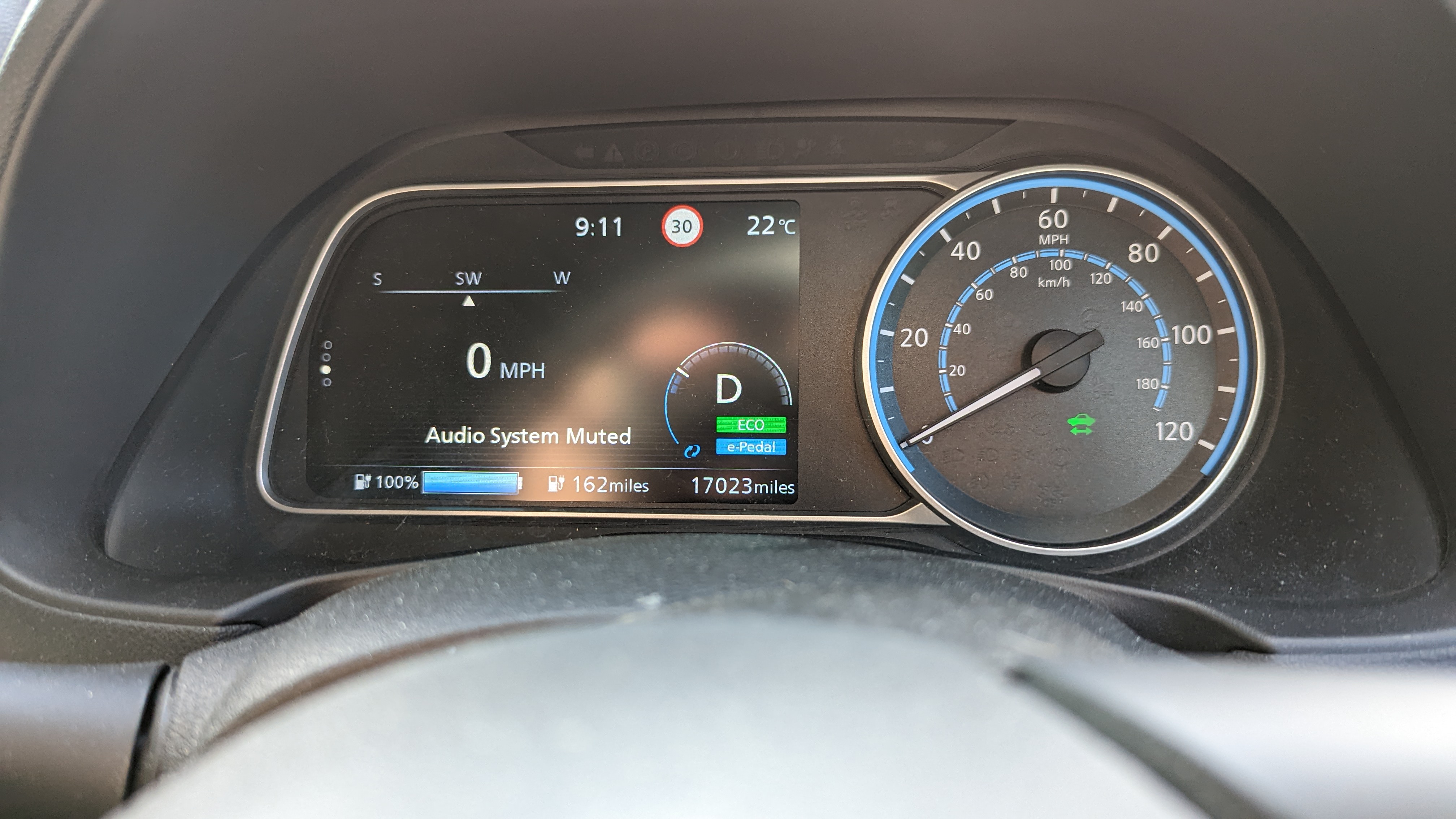
I am really missing the cameras though. One of the reasons I bought this particular Leaf model was to get the 360-degree camera view, which has proven invaluable over the past couple of years. Particularly when it comes to parking in my narrow British-designed garage, that’s only just big enough for my car to fit into. It’s so much easier to do when you have a camera to help get your positioning right — and show you exactly when to stop.
I could have picked up a stand-alone reversing camera in the interim, but I decided against it. I learned to drive without a camera, and I’m able to continue driving without a camera — especially since this situation is only temporary. It just means I have to rely on my mirrors, and twisting my upper body close to 180-degrees, to safely maneuver my car.
I’m managing, but I’m still not used to the fact the car is missing such an important piece. And it just feels weird driving without it, despite the fact it has little impact on the car’s and my own driving ability.
Highbrow features also mean high repair costs

While my problems are incredibly minor and barely count as problems, it is indicative of a much bigger issue in the car world. The fact that hi-tech solutions, while super-convenient, are much more difficult to fix when things go wrong.
One of the many touted benefits of electric cars is that they require less maintenance, and thus cost you less in the long term. A lot of people do forget that the parts that do go wrong are inevitably more expensive to repair or replace. Much like the Leaf’s infotainment screen.
Nissan told me that, after taxes and labor, a replacement infotainment screen would normally set me back somewhere in the region of £3,500 ($3,824). Had I not spent £350/$382 on an extended warranty, I’d have to choose between paying up or living without an infotainment system.
Neither option is particularly good, and I may have seriously considered selling the car and getting something better. Great as the Leaf is, it still has problems, and those problems only seem to annoy me more with time. Fortunately I didn’t have to go that route, and it proved to be some of the best £350 I ever spent.
It also got me thinking about how much it might cost to get an out-of-warranty screen replacement in a Tesla Model 3 or Model Y — seeing as how you can’t safely drive without one. Just shy of $1,500 all in, according to Green Car Future, though they claim it used to cost closer to $2,500.
The battery in an EV is also one of the worst parts to replace, costing several thousands dollars to get a new one installed. Fortunately you'll be hard pressed to find an EV battery that doesn't have a warranty of at least eight years or 100,000 miles.
Bottom Line
What Tesla reportedly charges is nowhere near as much as Nissan quoted me, but it’s certainly not a small amount of money to spend on repairing an essential part that should be more of a frivolous extra. But of course an iPhone 14 is more difficult and expensive to repair than an old-school Nokia.
The same is true if you compare your television or vacuum cleaner to the model your grandparents had in the ‘50s. Cars are absolutely no exception, and it’s only going to get worse as they become more and more advanced. Particularly as cars start relying on more cutting-edge features and hardware needed for autonomous driving systems to work properly.
We can only hope that making this technology more widespread will help bring the costs down. Assuming, of course, right-to-repair ensures parts are available and people can access tools and knowledge they need to self-repair. But that’s a whole other story.

Tom is the Tom's Guide's UK Phones Editor, tackling the latest smartphone news and vocally expressing his opinions about upcoming features or changes. It's long way from his days as editor of Gizmodo UK, when pretty much everything was on the table. He’s usually found trying to squeeze another giant Lego set onto the shelf, draining very large cups of coffee, or complaining about how terrible his Smart TV is.
